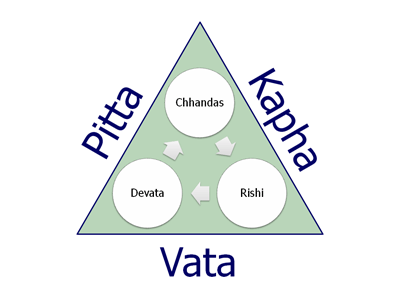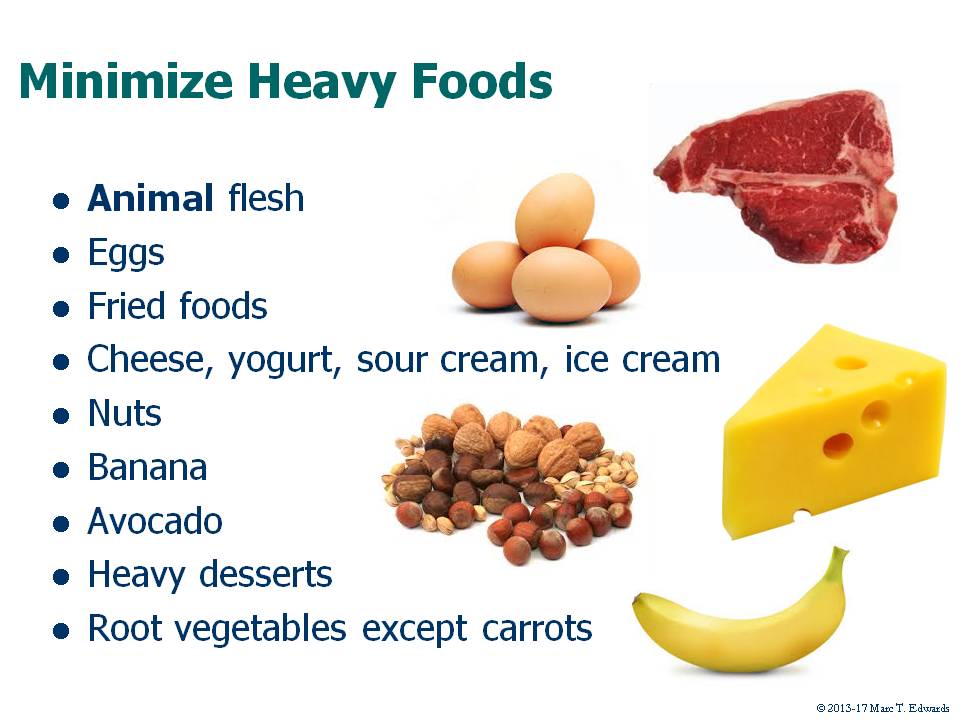How to Achieve Sustainable Weight Control
Your Body Creates Consciousness from Food

If you’ve struggled year after year to achieve your resolutions for better health and fitness, you've come to the right place. Life is meant to be enjoyed in higher consciousness. Food affects consciousness as much as it does the physical body. You are a product of what you eat, when you eat and how you digest your food, along with what you do with your consciousness. Harness the ancient wisdom of Ayurveda, the Science of Life, to improve your unique situation. Here, you'll learn how to normalize digestion, detoxify, select and savor health-promoting food, and restore balance.
The Weight Control Formula
Those prone to obesity have the gift of Kapha Dosha, which gives strength and stability to life when balanced. You can be solid without being fat if you take proper care of yourself. Here's the formula for sustainable weight control:
- Lighten your diet
- Nourish healthful eating habits
- Normalize digestion
- Reduce Ama, then follow seasonal detoxification procedures
- Maintain a health-promoting daily routine
- Fast on liquids one day each week
- Get picky about what you eat: beans, greens, whole grains, ripe fruit, lassi
- Balance your Doshas
Does this seem like a tall order? Don't worry. You'll experience benefits at each step along the way. In the process, you'll learn the basics of Ayurveda. Moreover, you don't need to do everything—and certainly not all at once. The interventions are listed in order of priority.
Also, some steps may not apply. For example, if your Digestion and Elimination are already in good shape, then skip step 3. Similarly, if you don't have significant symptoms from Ama (the toxic products of improperly digested food), then you can move on to step 5 until the time comes around for spring or fall seasonal detoxification.
Start with a Light Diet

Start by lightening the quality of the food in your diet by taking less heavy foods. Try to limit them to your noon meal when the digestion is strongest and best able to handle the load. This is particularly important for cheese, yogurt, sour cream and ice cream which are likely to create toxicity when consumed in the evening. Poultry is generally lighter than seafood. Red meats are the heaviest and most Tamasic. Modern diet research confirms the health risk of eating red meat.
Most vegetables and legumes (beans and lentils) are light. Have them freshly prepared in satisfying quantity. If you get gas from beans, choose mung beans, French lentils, red lentils or other small lentils. Cook them until soft or soupy. This is quick and easy using a pressure cooker. Add a pinch of salt and a little healthy oil (like ghee, olive oil or coconut oil) and spices before eating to make them more digestible. Avoid black lentils (urad dal) which may contribute to weight gain.
Don't Forget the Grains
A nutritionally balanced diet needs to include whole grains along with legumes, vegetables, fruit and milk products. The optimal proportion of these items will vary according to individual factors. See What Diet is Right for Me?
Carbs [sic] have gotten a bad rap in recent years, while many have jumped on the gluten-free bandwagon. The real problem is that the standard American diet (SAD) is stuffed with refined carbohydrates including white flour, white sugar and high fructose corn syrup. This junk is cheap and, therefore, omnipresent. There is good scientific evidence associating its consumption with both poverty and obesity.
Whole grains, on the other hand, are the staff of life. From the Ayurvedic perspective, there are significant differences among them that should be considered when deciding what to include in your diet. For the majority of people who are struggling with weight control, hulled barley will be the best choice. Barley is light and has a mild diuretic effect—i.e., it is somewhat astringent. This makes barley excellent for all except those with true gluten allergy and those who are suffering from dryness (typically occurring in winter), constipation or other signs of Vata imbalance.
Whole wheat (and its cousins bulgur, spelt, kamut and farro), rice, oats, sorghum and quinoa are heavy by comparison with barley. Yet they are also Sattvic, which means that they are easily converted to Ojas and strengthen the whole physiology. So, enjoy these too, but in moderation. Limit rice, which is the heaviest, to 3-5 modest servings per week.
Millet, rye, teff, buckwheat and corn share the lightness of barley. Because they are also somewhat heating, they are not optimal in summer or for those whose are already suffering from excessive bodily heat. But if well-tolerated, they can be enjoyed for variety. By contrast, amaranth is cooling and Pitta-balancing. It may, however, aggravate Vata and Kapha if consumed in excess.
Because of the inherent dryness of grains, a little healthy oil and a pinch of pink mineral salt should generally be added during cooking.
Go Slowly
You didn't get to your current situation overnight. As much as you want to improve, it's not an emergency. So, don't create stress for yourself or your loved ones by trying to do too much to fast. To be successful, you'll need to establish new habits. This is not difficult, but it takes time. Please be patient with yourself and pay attention to my advice for Managing Personal Change.
Herbal Therapy*
Herbal therapy can be a helpful adjunct for reducing Ama and correcting indigestion. Occasionally, I recommend herbal combinations to assist with weight reduction. Be Trim tea can be taken mid-morning and mid-afternoon to curb excessive appetite. Trim Support tablets can also help. Take 1-2 tablets with warm water 8-9 AM and 4-5 PM. For those who are markedly overweight and have Ama symptoms or Vata imbalance, Triphala Guggulu powder may be beneficial. Take 1/8-1/4 tsp. in warm water twice a day after lunch and dinner. Triphala Guggulu powder may also support goals for lowering cholestrol. Purnarnava Guggulu tablets would be advantageous for Kapha imbalance and fluid retention. Take 1-2 tablets with warm water 8-9 AM and 4-5 PM.
*If you order herbs or personal care products from MAPI using the links on my website, you will receive a 20% discount on most items except Amrit. I will receive a 20% commission. If you order products from Banyan Botanicals using such links, I will receive a 15% commission. You can get a one-time 15% discount by using this code: QATOQI15. In either case, the commissions don't affect the price you pay.
Resources
- Ayurveda Consultation Process
- Ayurvedic Vegetarian Cooking Classes
- Guided Grocery Shopping
- Group Lectures on Ayurveda
- Food and Health
- The Doshas
- The Three Gunas
- Vedic Science
- The Dhatus
- Ideal Daily Routine
- Managing Personal Change
- Balancing the Doshas
- Managing Indigestion
- Ama Reduction
- Home Detoxification
- Rasayanas - Elixirs for Health
- New Client Questionnaire
- Health Habits Assessment
- Ama Assessment
- Digestion Assessment
- Dosha Imbalance Assessment
- Dosha Assessment
- Light Vata Pacifying Diet
- Light Vata Pacifying Diet with Pitta Precautions
- Light Pitta Pacifying Diet
- Kapha Pacifying Diet
- MAPI Newsletter on Grains
| Prakriti | Kapha | Pitta | Vata |
|---|---|---|---|
| Vata | V | V | V |
| Pitta | P | P | B |
| Kapha | K | K | B |
| Vata-Pitta | V | P | V |
| Vata-Kapha | K | V | V |
| Pitta-Kapha | K | P | B |
| Tridosha | K | P | V |
V = Vata Pacifying Diet
P = Pitta Pacifying Diet
K = Kapha Pacifying Diet
B = Balanced Diet